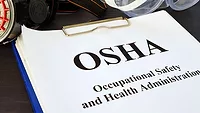Pushing for Faster Permitting, Cleaner Water, and More Cooperation
EPA Regional Administrator Michael Martucci met with officials to discuss important topics related to clean drinking water

Image via Vlada Karpovich from Corelens
In a state known for both its industrial roots and its environmental challenges, the head of the EPA’s Region 2 office spent a packed day in New Jersey meeting with business executives, water utility officials, and legal leaders to pitch a new era of “smart, fast, and collaborative” environmental action.
Michael Martucci, the EPA’s top administrator for Region 2—which includes New Jersey, New York, Puerto Rico, and the U.S. Virgin Islands—made the rounds in Trenton and Edison to discuss everything from safe drinking water to federal permitting reform. His message: the EPA wants to be a partner, not a roadblock.
“We’re focused on building bridges — with business leaders, utilities, and legal experts, because environmental progress happens faster and lasts longer when we work together,” Martucci said.
Why It Matters—for Drillers, Developers, and the Public
At the heart of the day’s discussions were policies that could directly affect industries like drilling, construction, and manufacturing—especially when it comes to how long it takes to get permits for drilling, building, or expanding facilities. Permitting delays have long been a pain point for energy producers and developers, who often face months (or even years_vof regulatory hurdles before a shovel hits the ground.
For the drilling and energy sectors, Martucci’s emphasis on permitting reform signals potential relief. Shorter, more predictable permitting timelines could speed up everything from natural gas infrastructure projects to remediation work at brownfield sites—projects that generate jobs and tax revenue. Of course, with every "cutting of the red tape" policy comes challenges like environmental concerns...
Critics worry that accelerated reviews could lead to weaker oversight, rushed environmental assessments, and increased risks to air and water quality. There are also fears that faster permitting may sideline meaningful public input, reduce transparency, and leave communities, especially those near industrial development that are more vulnerable to long-term environmental harm.
For everyday residents, the conversation hits home in a different way: clean water, lower utility costs, and more accountability from the industries operating in their neighborhoods. That’s especially relevant in places like Edison, where the EPA is partnering with the Middlesex Water Company to tackle PFAS contamination in local drinking water.
Here's how the day went:
- Martucci’s first stop was a business roundtable hosted by the Commerce and Industry Association of New Jersey (CIANJ). Here, he listened to concerns from business leaders and emphasized the agency’s dual goals: protecting the environment while supporting economic growth.
- Later, at the Carl J. Olsen Water Treatment Plant in Edison, Martucci got an up-close look at the plant’s advanced filtration technologies and ongoing efforts to comply with stricter PFAS standards. The Middlesex Water Company shared plans to build a new treatment facility designed to meet both current and future federal regulations.
- The day wrapped with a speech to the Steward G. Pollock Environmental American Inn of Court, where Martucci addressed a crowd of environmental law professionals. There, the conversation turned more technical—covering regulatory enforcement, legal trends, and how the EPA can work more effectively with both public and private-sector lawyers to ensure compliance and protect public health.
While much of the EPA’s work recently has centered on enforcement, this tour reflects a broader shift toward dialogue, partnership, and prevention. Martucci’s emphasis on cooperative federalism—a model where states, businesses, and federal agencies share responsibility, aiming to replace friction with flexibility.
Still, it’s a fine balance. Environmental advocates will be watching closely to make sure faster permitting doesn’t come at the cost of weaker protections. And legal communities are scrutinizing whether this more collaborative tone leads to meaningful improvements or just more bureaucracy by another name.
But if the day’s events are any indicator, the EPA under Martucci is trying to thread the needle: be more efficient, stay science-based, and keep both industry and public interests in the room.
Looking for a reprint of this article?
From high-res PDFs to custom plaques, order your copy today!









